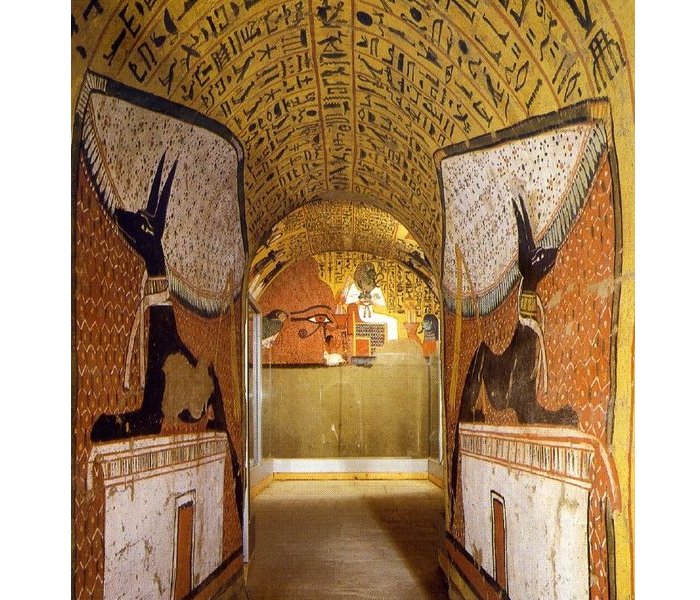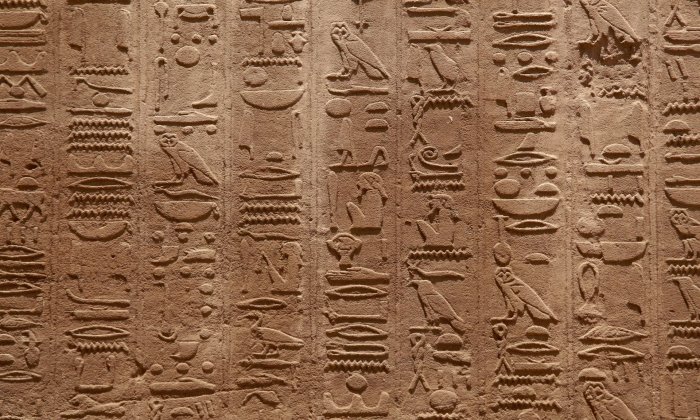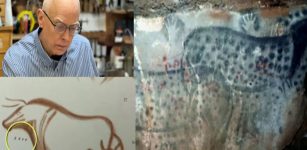Ancient Egyptian Funny Signs, Symbols And Pictograms: What Do They Really Mean?
MessageToEagle.com – Ancient Egyptians used a variety of signs, symbols and pictograms that have been discovered on ancient walls, tombs, potsherds and other places.
For a long time scientists had no idea how to interpret all these symbols, so they were dubbed very unscientifically ‘funny signs’, but what do these symbols really mean? What was the purpose of carving them?
Scientists now think they have unraveled the mystery of funny signs, symbols and pictograms in ancient Egypt.
The settlement at Deir el-Medina, on the west bank of the Nile is an ancient place where some 40 to 120 workers and their families lived between 1550 and 1070 BC. These were the workers who built and decorated the royal tombs in the Valley of the Kings, where the legendary King Tutankhamen is buried, along with other pharaohs and elites.

Kyra van der Moezel and her collegues from the University of Leiden studied identity marks from the settlement and discovered something very interesting.
Funny signs
More than three thousand years later Deir el-Medina reveals a wealth of archaeological information. An exceptional number of written sources have been found covering trade, the law, religion and literature. There is a large number of identity marks, often imprinted on potsherds or as graffiti on the rock walls of the necropolis.
Not knowing what these symbols represented, scientists simpy called them “funny signs”.

So far researchers have identified four types of ancient Egyptians identity marks. Some symbols appear to be geometrical and use squares, triangles or circles, while others were derived from the written language. The Leiden researchers also found images of beings and objects that in terms of their function are comparable with the symbols that we use today in WhatsApp.
Pictograms
“Under the guidance of lecturer Ben Haring we have now managed to interpret most of these symbols,” Van der Moezel explained.
“You can compare them to pictograms today, like information symbols at airports or product logos. They all have an inherent meaning, but are not related by any linguistic rules. The rules governing how words and sentences are formed don’t apply here. The symbols use other means of expressing information.
See also:
Secrets Of The Spiral Symbol Left By Ancient Civilizations
Secrets Of The Scarab – Ancient Sacred Symbol In Human History
Intricate Mazes And Labyrinths: Mysterious Symbols Of Beauty And Confusion Or Communication Signals
10 Ancient Celtic Symbols Explained
‘These pictograms depict images of animals, objects or professions, for example,’ says Van der Moezel. ‘They were used in two different ways. First of all metonymically, whereby the symbol refers directly to what the person who drew it wanted to convey.
The scorpion hunter of Deir el-Medina, for example, was represented by a scorpion symbol. The Egyptians also used the pictograms metaphorically. A well-known Egyptian metaphor is, for example, ‘as fast as a jackal’, which could explain why a worker is represented by the image of a jackal.’
Continued existence
Surprisingly enough, the identity signs continued to exist even after the workers started to make more use of writing.
“People often assume that identity signs are ‘more primitive’ than written language, and that writing will slowly but surely take over from symbols. However, what we see is that writing and symbols continue to exist alongside one another.
There is some interchange between the two, but symbols have never been ousted as a means of communication. Symbols continue to be useful because you can express a lot more in a single symbol than in a letter or a word,” Van der Moezel said.
MessageToEagle.com










